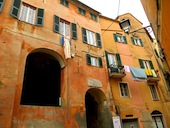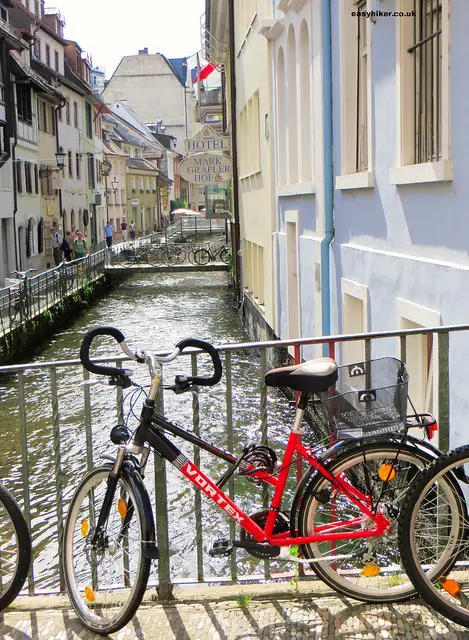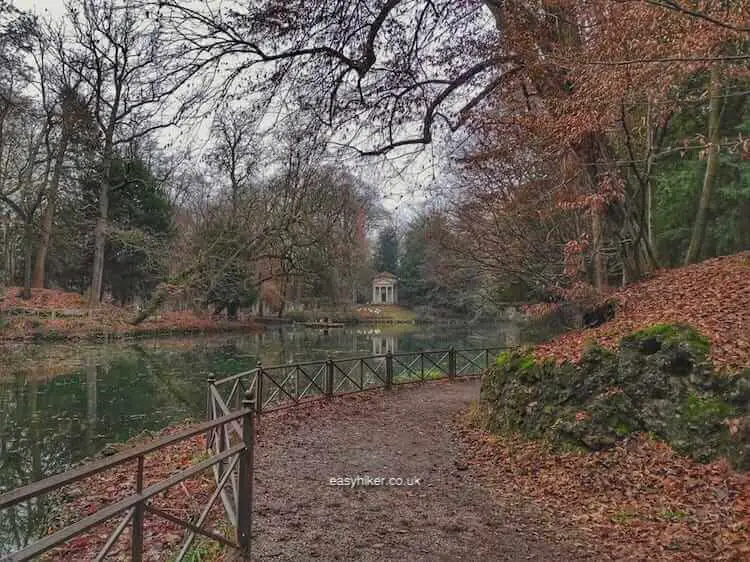Here is a quiz question for you. What is the only European country that has never possessed any kind of a railway network?
Hands up everybody who said “the Vatican”. Wrong! (The correct answer is Andorra.)
Don’t feel downhearted if you could not get it right, as the New York Times comforts those of its readers who have just failed to solve one of the paper’s daily puzzles. I empathize in particular because, whenever the question starts “which European country does not” or “has not”, the answer is usually “the Vatican” because this church state in the middle of Rome is so absurdly small: its surface area does not even cover one square kilometer, and fewer than 1000 inhabitants live within its confines.
But while the Vatican is an outlier among European states in many ways, it did eventually – in 1929 – follow the example of nearly all the other nations by connecting its territory to the pancontinental rail network.
You may take your hands down now, by the way, thank you.
The Vatican’s rail system is not only one of Europe’s youngest but also – by some way – its smallest: with a current track length of barely 300 metres, it is actually the shortest of all the 195 national grids in the world.
The church state’s rail network was bigger once, but during the preparations for the papal Jubilee Year of 2000, its length was cut by nearly half when one of its tracks was converted into a walkway.
The Wackiest Walk in Rome
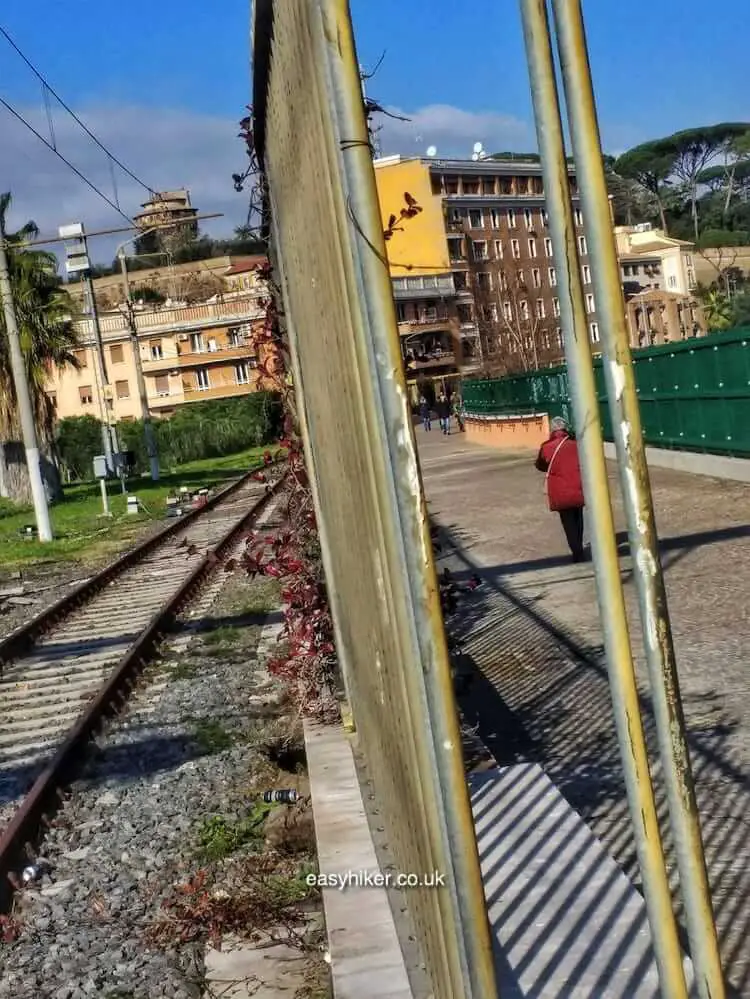
The new trail was named the Passeggiata del Gelsomino, the Jasmine Walk, after the Jasmine Valley that stretches between the Vatican and the Janiculum hill where the plant was once abundant.
Paying tribute to the area’s history, a free-standing structure of newly planted jasmine was erected to separate the modern walkway from the remaining tracks.
This “wall of jasmine” may not look like much at this time of the year, but in summer, the flowers blossom and apparently fill the entire walkway with their sweet scent.
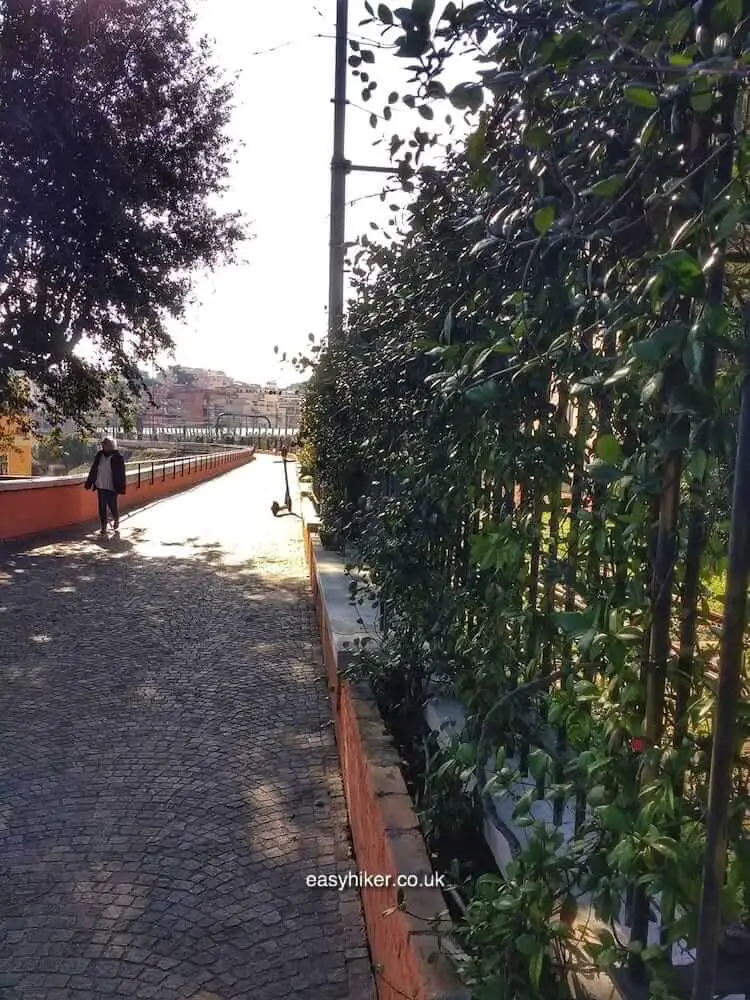
This walk in Rome starts at the San Pietro station – yes, the Vatican’s tiny rail system even has its own terminal …
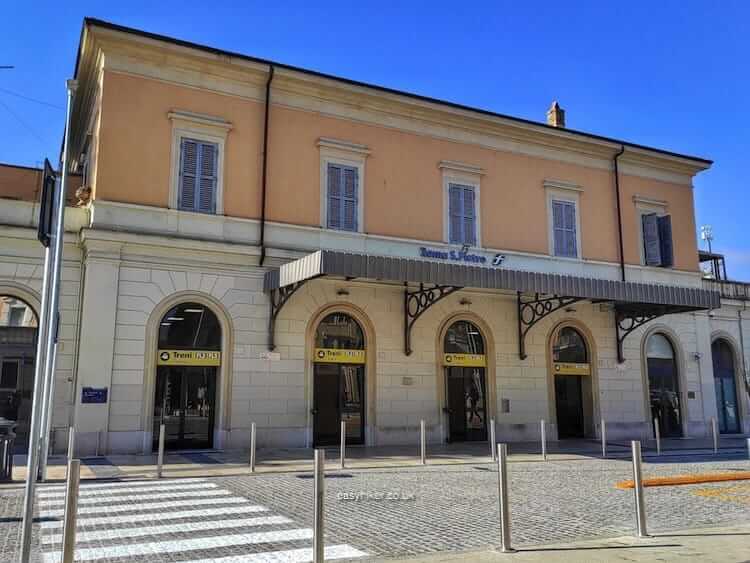
… which, from the outside, looks disappointingly functional.
I am not sure what I expected – something more like an architectural folly perhaps, in line with the fairy tale character of the entire enterprise. Or something designed by Michelangelo?
Instead, the building does not look any different from the cookie-cutter stations that you can find elsewhere on the Trenitalia network.
But walk down Binario 1 to its very end, and something not unlike the beginning of a Harry Potter story will unfold in front of your eyes (think of platform 9¾ at London’s King’s Cross station) …
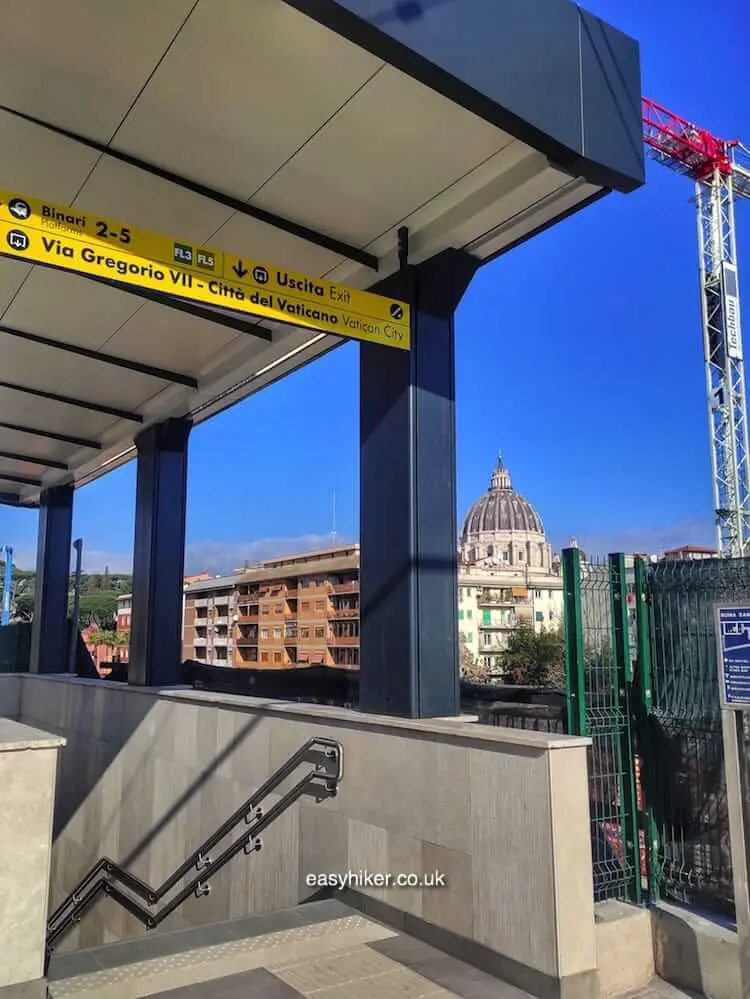
… when another world suddenly opens up.
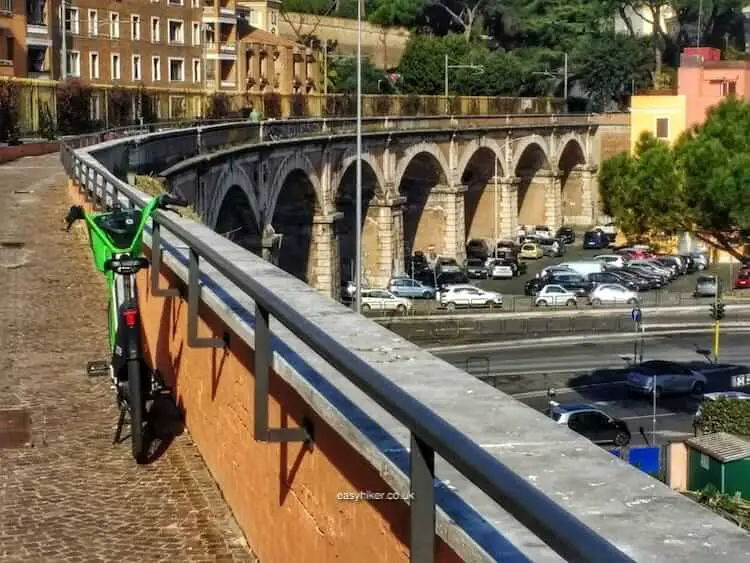
On this walk in Rome, you will find yourself on a fortified extension of the Aurelian Wall, a piece of 3rd century infrastructure which was then integrated into 20th century infrastructure by resourceful railway engineers. (Romans do not easily let go a good wall go to waste.)
Since then it has become a piece of the 21st century townscape that is designed to entertain both natives and visitors. Little in Rome is actually “new”: Romans constantly recycle, and when the railway line that connected the Vatican to the rest of Italy was found to have outlived its useful span, a new purpose was conjured up for one of the disused tracks.
Its equally disused twin track, meanwhile, is still there …

… bricked up and accompanied by a bench for non-existing passengers who are waiting for non-existing trains.
In moments like this, you will feel that you have stumbled into a piece of surreal performance art. Not least because the entire walk as well as San Pietro Station actually lie outside the Vatican state’s territory.
The only still operational part of the church state’s “network”, meanwhile, veers off towards the left: the 300 surviving metres of the Vatican’s track are part of the route between Civitavecchia and San Pietro, the station that is used by Trenitalia as the Roman terminus of this suburban connection.
Cautionary advice: the trail of this wackiest walk in Rome is short and only occasionally scenic or visually impressive. Although you get to see some unfamiliar parts of Rome from visually attractive angles, …
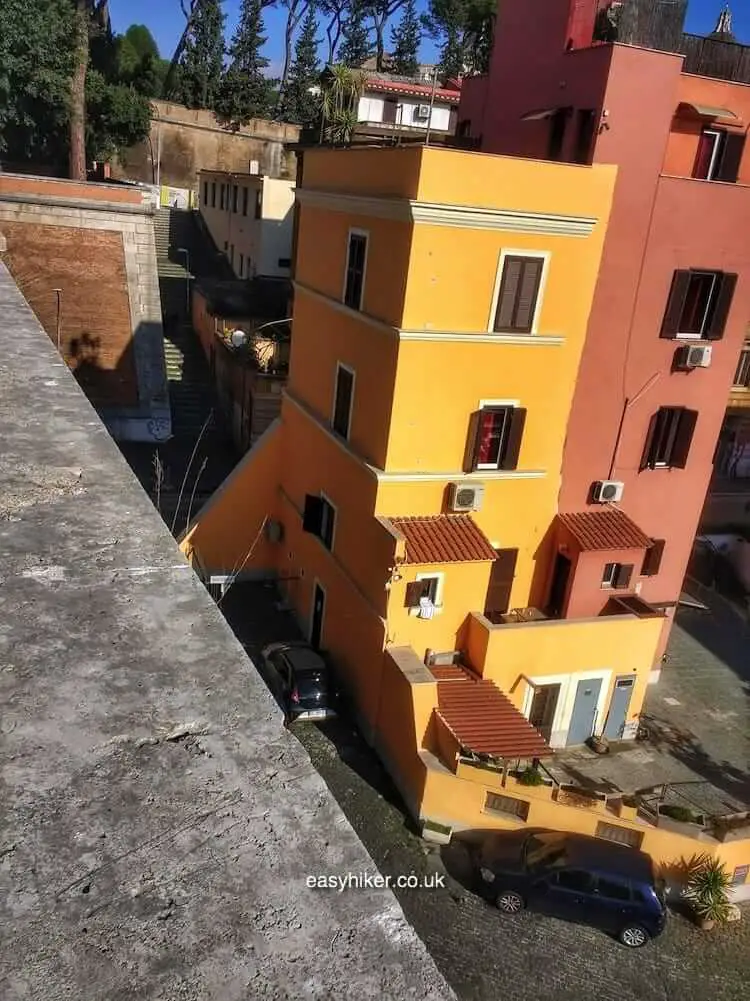
… I would hesitate to call these views “breathtaking”, as some of the official online literature has it.
And as nice as it is to see a green space in the city, the view that the small garden at the end of the walk offers – “a chance to connect with nature amidst the urban landscape” – requires a pair of heavily rose-tinted spectacles.
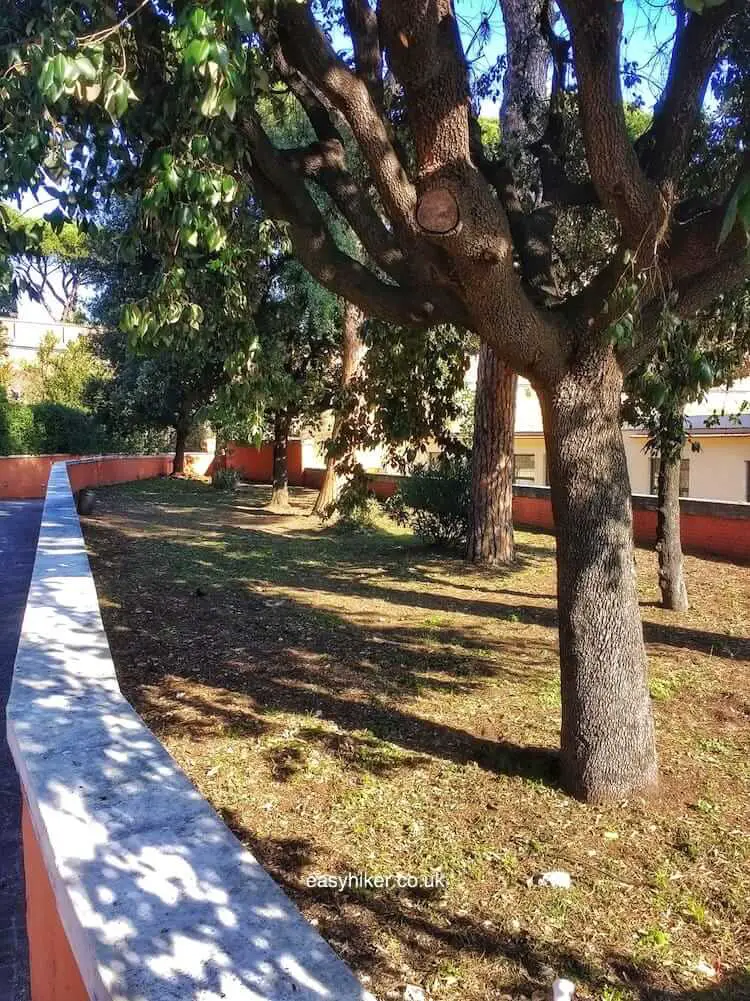
The Passeggiata gets more mixed reviews in the social media. For every person who finds the walk sweet and charming, there is one who feels underwhelmed and let down. (Mistaking the purple prose of tourism brochures for a factual product description is the straightest road to disappointment.)
Discontented visitors also complain that the walk is hard to find. Not so hard, actually. Besides: is not the fact that it is a little hidden one of its fairy tale charms?). It also fails, they complain, to offer a “significant” view of Saint Peter’s.
I do not want to argue what a significant view may look like …
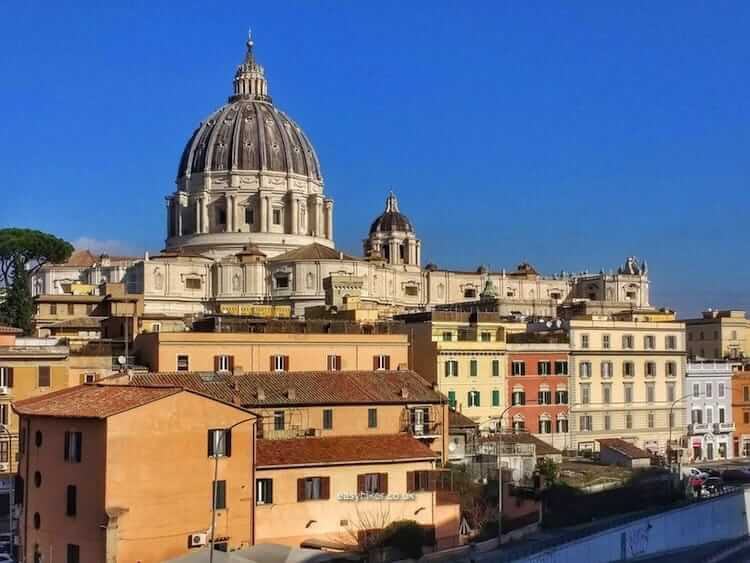
… or, another bone of contention, whether the descent from the Aurelian Wall at the end of the walk is “magnificent” or not.
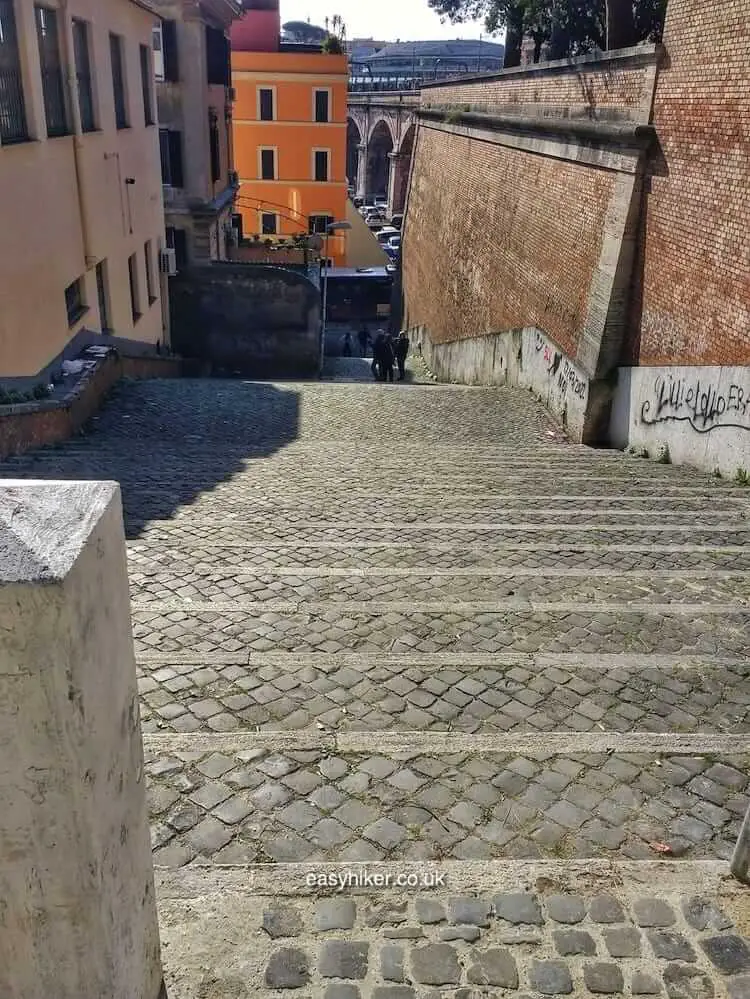
What I would want to say instead is this: in the universe of urban walking trails, the Passeggiata del Gelsonomino is the equivalent of a small and charming country church, not – despite the physical vicinity – its Saint Peter’s.
And while objective standards may exist to judge whether something is magnificent or significant, charm always lies in the eyes of the beholder – which is another way of saying: some people will get it and some will not.
If you have a taste for the strange, the absurd and, well, the wacky, you will like the Passeggiata. If not: there are other places in Rome that will be more to your liking.
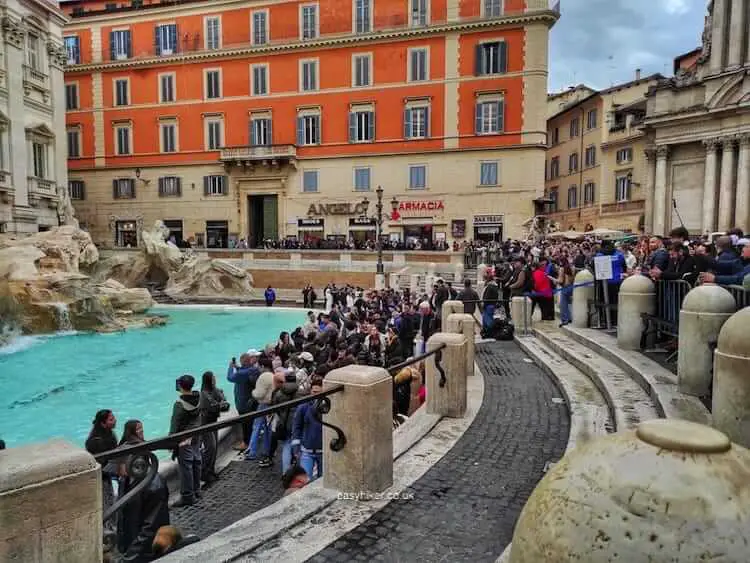
Finally, a word about the risks of travelling to the Mediterranean in the off-season, particularly early in the spring and late in the autumn. It is a fact rarely mentioned in tourism brochures that, while southern European summers are reliably hot, the weather in those months of seasonal transition is almost as unpredictable as it is in Northern Europe all year round.
Even cities of fairly southern latitudes can be surprisingly cold, but above all, you may find them wetter than you expected.
Rome has an average annual rainfall of 750 mm, considerably more than London or Paris. On top of that, the rainfall in those two cities is rather evenly distributed throughout the year.
Cities in Southern Europe, conversely, have generally dry summers, and their rainfall is squeezed into three months during winter or on either side of it.
In other words: when it rains, it pours. I have ruined several nice pairs of shoes in Mediterranean downpours during those days when I still used my Italian-made loafers for urban walks. (Italian shoes look beautiful but tend to disintegrate when used under any but the most benign conditions.)
Now I wear trainers for such walks, but even so, I do not like to see those trainers ruined in sudden downpours or get my feet soaked in puddles that tend to form on shoddily maintained Mediterranean sidewalks.
The good news is that this is a problem with an easy solution. Our friends from adidas have a useful line of water-resistant trainers, as I discovered recently when browsing through their online catalogue. Getting ready for the “walking season”, after all, also means preparing oneself for all eventualities – including rain in supposedly sunny climes.




